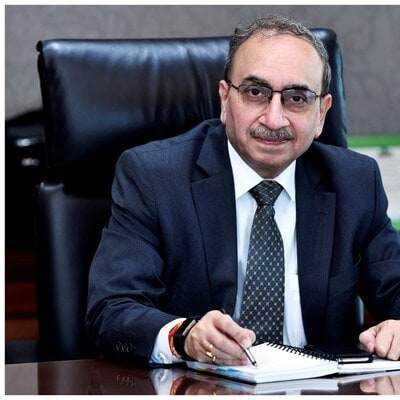SBI increased the fixed deposit rate by up to 75 basis points on a few short-term maturity options last month. Picture courtesy of Wikipedia
According to SBI chairman Dinesh Kumar Khara, the bank is anticipating loan growth of 14–15% in the fiscal year 2024–2025 given the present rate of economic development.
“Typically, we view it as the GDP growth rate plus inflation, plus an additional two to three percent. That puts the figure at about 14%,” Khara stated in an interview.
Therefore, 14–15% credit growth is appropriate given our risk tolerance and relies on the lending opportunities available. We’ll be content to expand at this rate,” he remarked.
According to him, deposits increased by 11% the previous year.
“And we have some elbow room available in terms of excess SLR and which ensures that we don’t have any pressure on us to raise the deposit rates for supporting our loan-to-deposit ratio,” he stated.
The surplus Statutory Liquidity Ratio (SLR) of the bank ranges from Rs 3.5 trillion to Rs 4 trillion.
“I should also mention that we only have a loan-to-deposit ratio of roughly 68–69%. That gives us considerable leeway to lend without raising the interest rates on deposits.
Still, he declared, “We always prioritise deposits. We decided that there was potential for improvement and that we should, at least in part, increase our deposit growth rate this year, which is why we recently raised the interest rate on short-term deposits. And we’re working to ensure that this year we grow by at least 12–13 percent.”
SBI increased the fixed deposit rate by up to 75 basis points on a few short-term maturity options last month.
The rate for 46-179-day retail term deposits went from 4.75 percent to 5.50 percent, an increase of 75 basis points.
In response to a question regarding the Net Interest Margin (NIM) forecast for the current fiscal year, Khara voiced optimism, stating that it will likely hover around the level observed in FY24 or perhaps move by two to three basis points.
The bank’s domestic NIM for FY24 was 3.43 percent, down 15 basis points (bps), while the bank’s overall NIM was 3.28 percent, down 9 bps on an annual basis.
One of the main factors influencing NIM in FY24 was the increase in dollar and rupee liquidity costs brought on by the strict monetary policies implemented by central banks throughout the world.
Regarding Non-Performing Assets (NPAs), Khara stated, “Both the net and gross should be on a declining track. Since it also depends on the macroeconomy, forecasting is exceedingly challenging.”
Despite the bank’s efforts to protect its books from macroeconomic stress, it is challenging to provide any kind of warning regarding non-performing assets (NPAs).
“Our guidance as far as our credit cost is concerned, we have kept it at 0.50 per cent but our effort is to keep it at the level of 0.29 per cent,” he stated.
SBI’s net non-performing asset (NPA) was up 10 basis points year over year at 0.57 percent, while the company’s gross NPA decreased to 2.24 percent, a reduction of 54 basis points over the prior FY23. At the conclusion of FY24, the credit cost decreased by 3 basis points to 0.29 percent.

